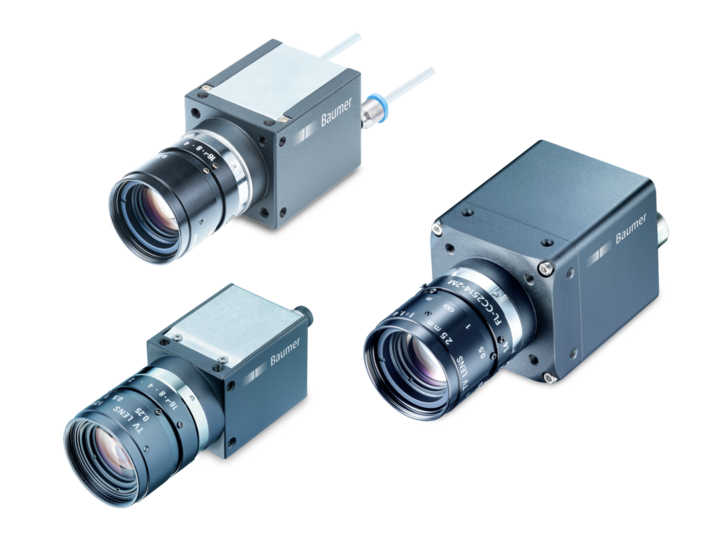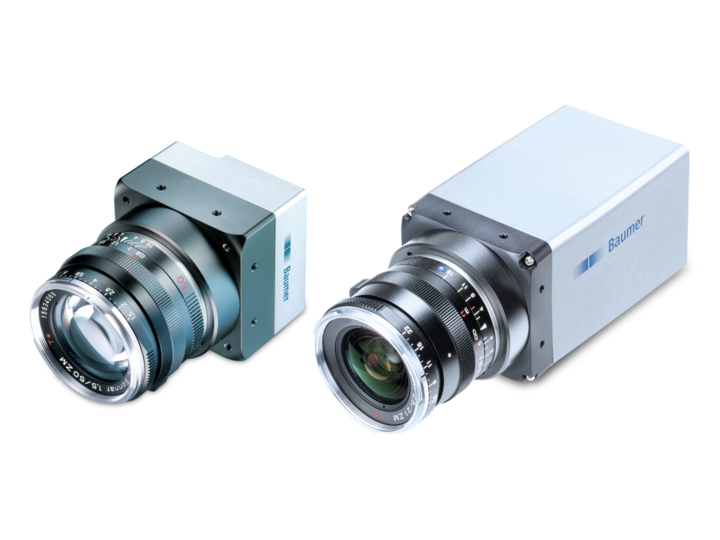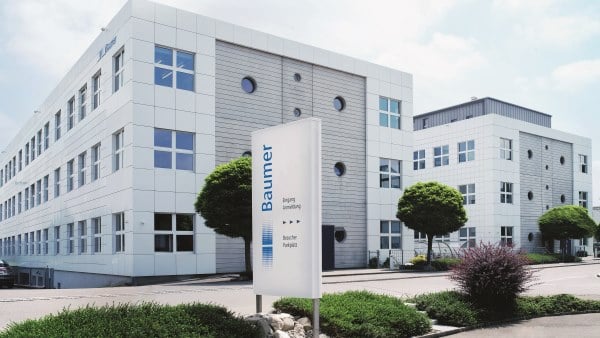Sweden
se
English
Nov 1, 2020
When accuracy matters: Process synchronization with industrial cameras
In visual inspection systems, an image must be captured at the exact moment when the (usually moving) object is fully underneath the lens and the illumination is activated. Sounds simple – but it involves some tricky details. This article presents these details along with hints to avoid them by selecting the appropriate hardware and the correct adjustment of settings in the software. The focus is on the camera support inquiries that are most frequently received by the technical support of Baumer.
Synchronization of machine cycle during processing, camera, and illumination takes place via so-called triggers – external signals or events that initiate image capturing by the camera and that are generated by hardware components or the applied software. These signals must be generated, transported, and processed. The processing steps require time or are subject to fluctuations that must be taken into account. However, modern industrial cameras are excellently equipped to handle such synchronization.
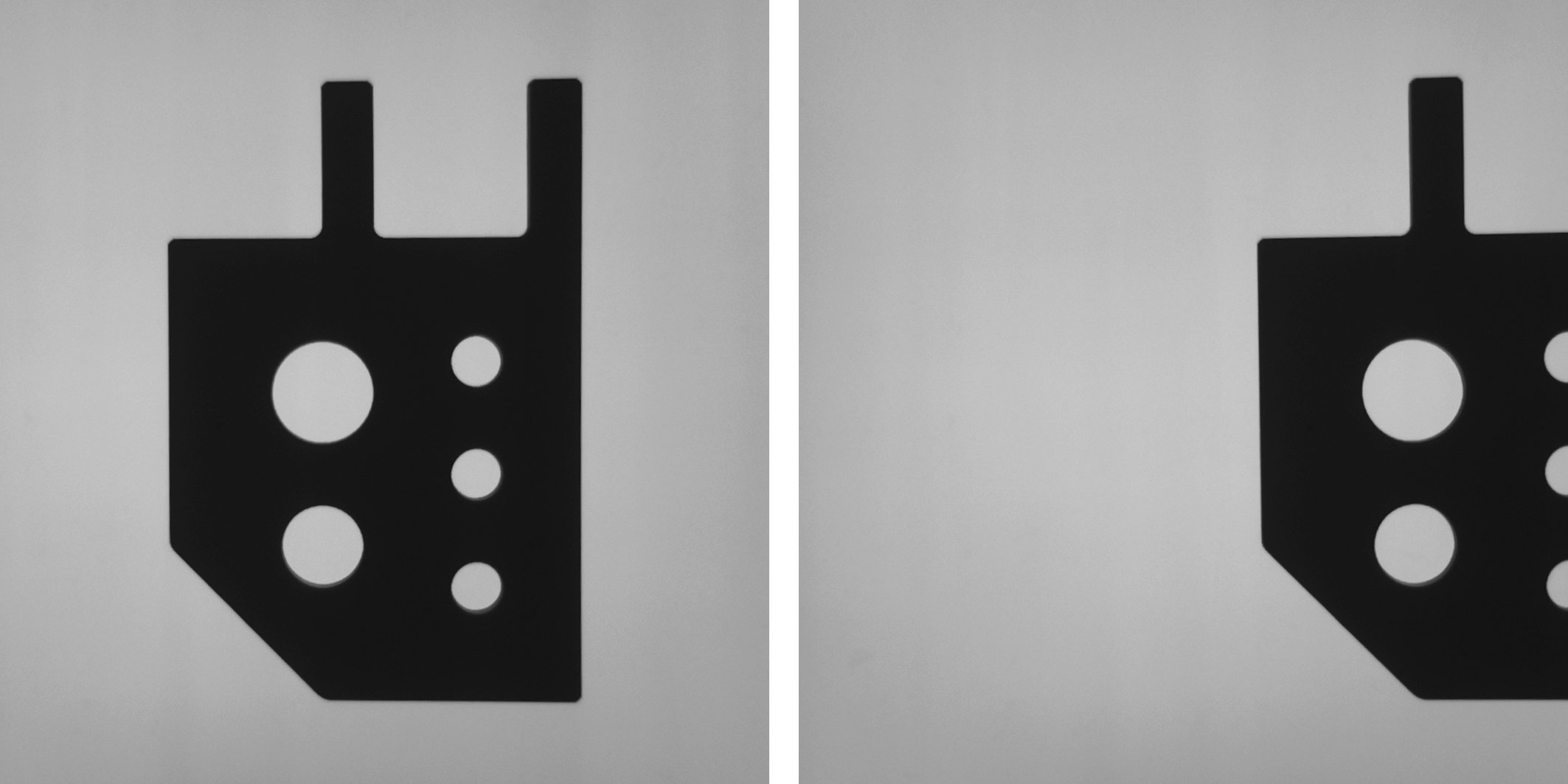
Using triggers
When working with triggers, it is also important to consider the point in time when the camera is receptive to the next incoming trigger signal. This depends on the employed camera and sensor type. For users, it is important to determine the frame rate that is required by the application. This can be used to specify additional parameters or exclude some sensor and camera types.
What is the trigger source?
Which input (I/O type) should be used for the hardware trigger?
The first-mentioned circuits have a switching time in the range of milliseconds, but can handle higher voltages and are insensitive to ground loops and electromagnetic interference due to the galvanic separation of the two circuits. GPIOs, on the other hand, are faster – they react with a latency in the nanosecond range, but are considered less reliable in terms of their resistance to ground loops and electromagnetic interference due to the lack of galvanic isolation between the signal
source and the camera.
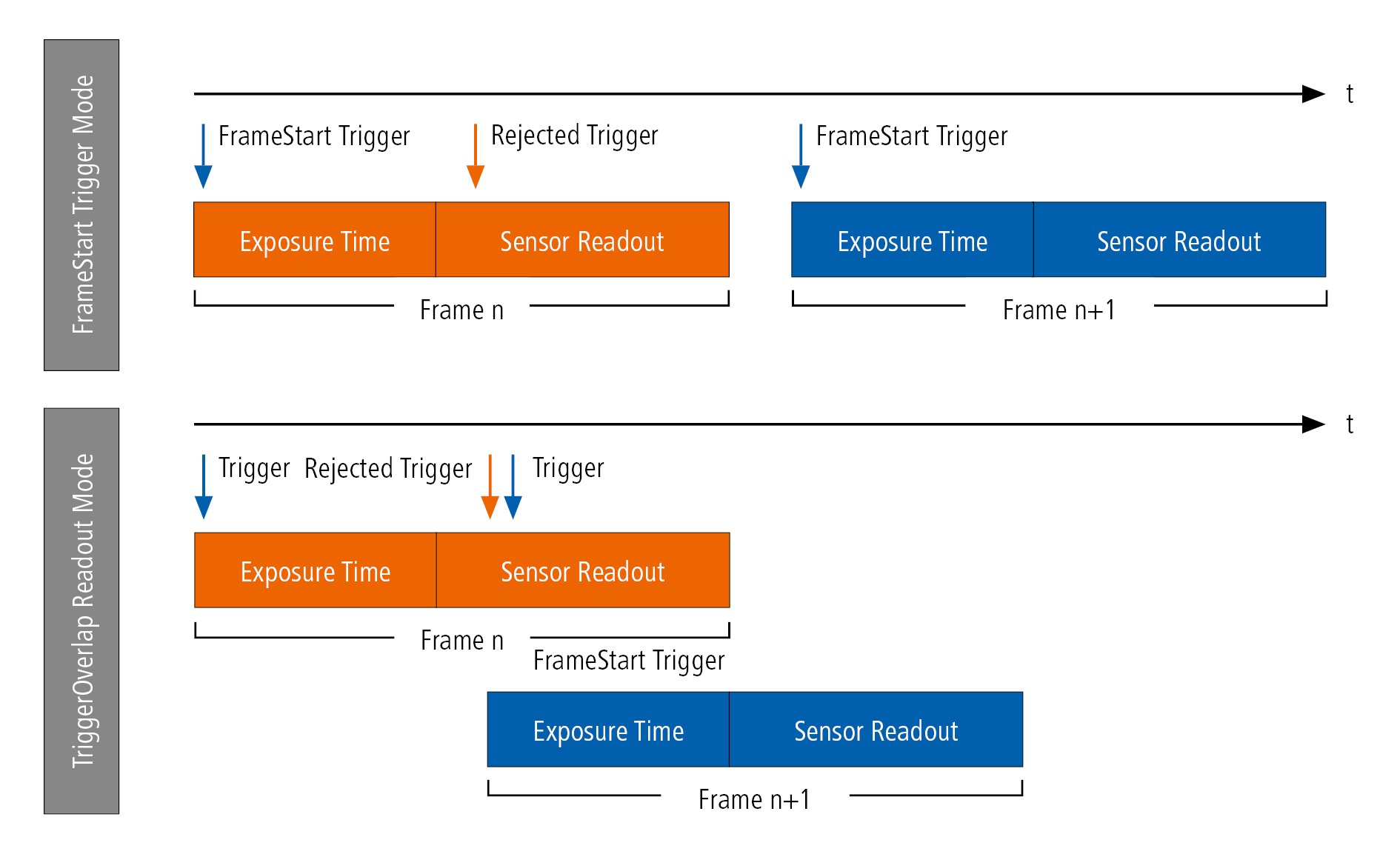
Number of images after the trigger?
---
1) GenICam_SFNC_v2_4 S. 155
2) GenICam_SFNC_v2_4 S. 178
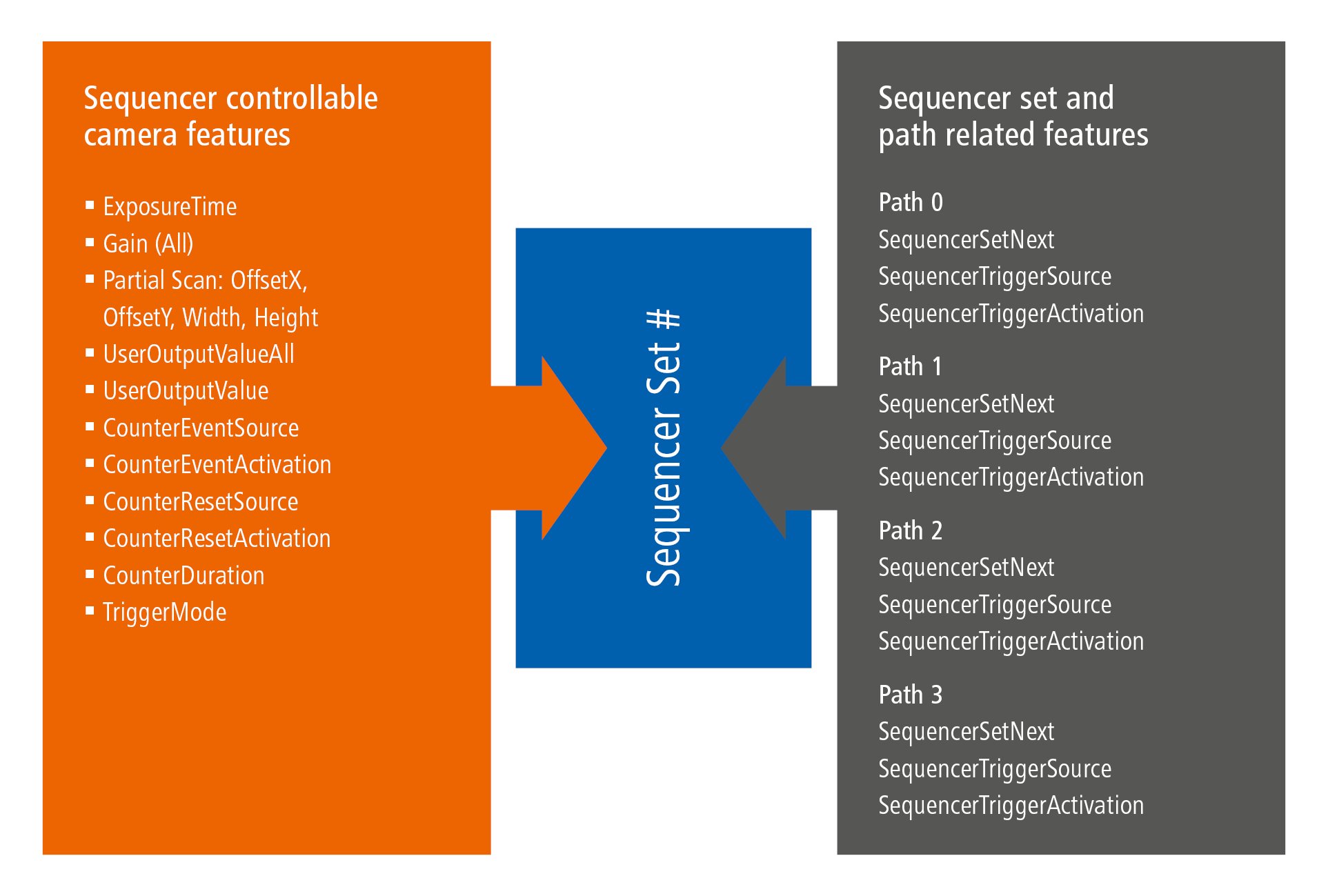
Sequencer – when more than one image is required
Each of these sets is allocated a number, and in Baumer cameras, can contain functions such as exposure time, gain, partial scan parameters, or the control of digital outputs. The allocated number is also part of the path information for the transition between sequencer sets. Another component is the signal whose change in state activates the set transition as well as the change in state (edge) that triggers. The source of the signal can be a hardware trigger or an internal camera signal, such as the end of a counter or timer. GenICam events such as ExposureActive or ReadoutActive can also serve as trigger sources.
While the use of a Sequencer is apparently more elaborate, it nevertheless offers substantially higher flexibility. For example, the exposure time can be individually set for single images or groups of images if they are captured in a dedicated sequencer set. In addition to the specific set exposure times, outputs can also be activated, and, for example, partial scan parameters can be set. If the process sequence and the required settings are presented as a process diagram, then everything is ready for efficient Sequencer creation.
Process and time synchronization via PTP
Press download
-
When accuracy matters: Process synchronization with industrial cameras
